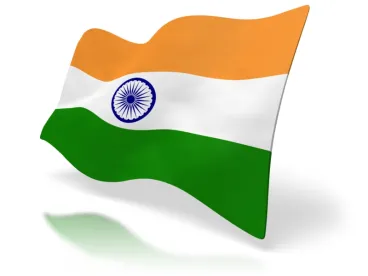-
The Guidelines have liberalized the collection, use and dissemination of Geospatial Data and Maps, and removed all requirements of licenses, permissions and clearances except for certain limited categories
-
There are no restrictions on the export of Geospatial Data and Maps which are within the prescribed threshold values
-
Compliance with the Guidelines will be through self-certification
-
Foreign entities, including Indian companies which are foreign-owned and controlled, are prohibited from collecting and owning certain categories of data / maps but can license the same from Indian entities
On February 15, 2021, the Department of Science and Technology of the Government of India (“DST”) issued “Guidelines for acquiring and producing geospatial data and geospatial data services including Maps” (“Guidelines”) which apply to all Geospatial Data,1 Maps,2 and other products and services offered by government bodies, individuals and private organizations. Under these Guidelines, the Government has not only recognized the crucial role played by Geospatial Data / Maps in the digital economy as well as traditional sectors, but has also significantly liberalized the erstwhile licensing regime.
BACKGROUND
To provide some context, prior to the Guidelines, geospatial data and maps were regulated by various policies, notifications and official memoranda issued by the Survey of India (“SOI”), Ministry of Finance (“MoF”), Ministry of Defence (“MoD”), among others. Some of the key policies/regulations are as follows:
-
The Government of India had published the National Map Policy in 20053 and subsequently, SOI published certain guidelines for its implementation.4 Both largely pertained to dissemination and licensing of maps prepared by SOI and did not address the generation or dissemination of maps by private entities.
-
MoD had issued instructions in relation to preparation and publication of maps, with the most recent instructions having been published through an office memorandum dated December 5, 2017.5 Under this, MoD had demarcated certain areas as restricted, the maps of which could only be prepared and used for sovereign purposes. The preparation and publication of maps of other areas were subject to security clearance from MoD and approval of SOI subject to their scale, attributes depicted, among other things.
-
The MoF had issued multiple notifications restricting the export of maps of certain scales and formats.
-
A highly controversial draft Geospatial Information Regulation Bill had been introduced in 2016, but eventually did not become a legislation.
The Guidelines recognize that some of these provisions have been rendered obsolete, given the technological advances in the sector basis which all earlier notifications, guidances, regulations, etc. issued by the DST, MoD or any other Government department which are contrary to the Guidelines expressly stand superseded.
CLASSIFICATIONS UNDER THE GUIDELINES
Classification of entities
The Guidelines classify entities which are engaged in the Processing of Geospatial Data into “Indian Entity(ies)” and others (“Restricted Entities”). An “Indian Entity” has been defined as “any Indian citizen, Government entities, Societies registered under applicable statutes, statutory bodies, Autonomous Institutions of the Government, or any Indian company or Indian LLP owned by resident Indian citizens or any Indian company or Indian LLP controlled by resident Indian citizens (as defined in the Explanation to Rule 23 of the Foreign Exchange Management (Non-Debt Instrument) Rules, 2019).”
As a result, Restricted Entities include all other entities, including Indian companies which are foreign-owned and controlled. Notably, if a company is either Indian-owned or controlled, it will qualify as an Indian Entity.
Classification of Geospatial Data
The Guidelines classify Geospatial Data on the basis of certain threshold values as follows:
-
On-site spatial accuracy: one meter for horizontal or planimetry and three meters for vertical or elevation.
-
Gravity anomaly: 1 milli-gal.
-
Vertical accuracy of bathymetric data in territorial waters: 10 meters for up to 500 meters from the shore-line and 100 meters beyond that.
As detailed later, there are certain restrictions on Restricted Entities for processing Geospatial Data finer than these threshold values.
LIBERALISATION OF GEOSPATIAL DATA
-
One of the most significant provisions under the Guidelines is that there is no requirement for any prior approval, license, clearance, or any other restriction on the collection, generation, preparation, storage, dissemination, publication, updating and/or digitization of Geospatial Data and Maps within the territory of India, unless specifically provided otherwise. This is a critical provision especially in light of the earlier regime which contained cumbersome and unrealistic compliance-related provisions.
-
There are also no restrictions on export of Geospatial Data/Maps which do not trigger the threshold values.
-
Further, both government and private entities are not only free to process the acquired Geospatial Data and develop applications and solutions in relation thereto but may also use the applications and solutions by selling, distributing, disseminating, etc.
-
The Guidelines provide that entities will be required to self-certify their adherence with these Guidelines. However, there are no details regarding the contents or manner of such certification. The Guidelines are also silent on whether there will be any authority which will monitor or review such certifications. While prima facie the requirement of self-certification is not compliance-heavy, the implementation of this requirement will need to be evaluated further.
-
The Guidelines clarify that there will not be any negative list of prohibited areas. This is in stark contrast with the earlier approach where the MoD had clearly demarcated areas including coastlines, international borders, etc. as restricted for the purpose of creation and publication of maps. However, a negative attributes list has been proposed, as detailed below.
-
Subject to the negative attributes, Indian Entities are free to inter alia create, generate, digitise, store and publish all Geospatial Data of any spatial accuracy within the territory of India including territorial waters.
RESTRICTIONS UNDER THE GUIDELINES
-
Restricted Entities cannot create and/or own Geospatial Data/Maps of spatial accuracy/value finer than the above described threshold values. However, Restricted Entities can obtain a license for such Geospatial Data/Maps from Indian Entities only for the limited purpose of serving their customers in India. Further, access to such data must be provided through APIs such that the data does not pass through the Restricted Entity or its servers. The re-sale and re-use of such data is also prohibited.
What precisely amounts to ‘passing through’ an entity or its servers is unclear. However, Restricted Entities may need to store/access the data for API integration, hence the said limitations may seem overly restrictive, especially when the Restricted Entities are limiting the use/storage of the data in India.
-
Geospatial Data/Maps of accuracy finer than threshold values are required to be stored and processed on a domestic cloud, or on servers which are located physically within India.
-
Restricted Entities are prohibited from conducting “terrestrial mobile mapping survey”, “street view survey” and surveying in Indian territorial waters, regardless of the accuracy. Since the terms have not been defined, it is difficult to ascertain the activities which the Guidelines seek to restrict. For instance, “survey” could include not only the dedicated process of generating maps, but also any incidental collection of location data through smart phones/devices. Similarly, the restriction on “terrestrial mobile mapping survey” may be applicable only to generation of maps/data by vehicles with specialized equipment but could also cover collection of transient location data through a smart device/phone which is being carried in a vehicle. This distinction will have a far-reaching impact on what is permissible for Restricted Entities and hence, clarifications on this aspect would be crucial.
-
Restricted Entities are also prohibited from undertaking ground checking/verification, ostensibly due to security concerns of permitting foreign entities to gather detailed information within Indian territory. Further, Restricted Entities cannot access Indian ground stations and augmentation services for real time positioning (Continuously Operating Reference Stations (CORS), etc.), as opposed to Indian Entities which can access these facilities freely. Whether such data can subsequently be licensed to Restricted Entities will need to be further evaluated.
OTHER PROVISIONS
-
The Guidelines state that there will be a negative list to be notified by DST containing sensitive attributes that would be subject to regulations for acquisition and/or use. These attributes will not be permitted to be marked on any Map by any person. The list will be prepared in consultation with the relevant departments of the Government and will be regularly updated. However, the restrictions under such lists will be minimized in order to boost ease of doing business.
-
DST will also constitute a Geospatial Data Promotion and Development Committee (“GDPDC”) which will have representations from relevant departments of the Government. The GDPDC would have the authority to decide any issue arising out of finalization of negative attributes lists and the regulations proposed on those attributes. The GDPDC would also be responsible for promotion of activities related to processing of Geospatial Data.
-
SOI, among others, has been directed to simplify and modernise the procedure, and revise its licenses in relation to obtaining of SOI maps by interested entities.
-
The Guidelines encourage collaboration between the Government and private parties to work towards open-linked Geospatial Data. The report of the committee of experts on non-personal data, once finalised, along with any subsequent regulations, may contain further guidelines in this regard.
Interestingly, whether these Guidelines are binding from a strictly legal perspective is uncertain. This is because, from a review of the Guidelines and information available in the public domain, it appears that there is no specific act of Parliament or statutory provision which empowers the DST to issue these Guidelines. Nevertheless, there have been past instances wherein similar policies and guidelines have been issued by the Government without specific statutory backing but are implemented nonetheless, and also adhered to by the relevant stakeholders in the industry.
CONCLUSION
The Government’s intent of liberalizing the regime on geospatial data has been emphasized in various provisions of the Guidelines both expressly and implicitly. This is a huge step forward especially given the precedents in this space, such as the Draft Geospatial Information Regulation Bill of 2016 which was heavily criticized. However, from a practical implementation perspective, certain aspects of the Guidelines such as the definition of ‘mobile mapping surveys’, and licensing terms for Geospatial Data finer than the threshold values, require clarifications from the Government. This will help ensure that the process of liberalization does not get hampered due to interpretational issues. Exciting times lie ahead for various stakeholders in the Indian geospatial and maps space.
1 “Geospatial Data” has been defined as “Positional data with or without attribute data tagged, whether in the form of images, videos, vector, voxel and/or raster datasets or any other type of geospatial dataset in digitized or non-digitized form or web-services”; “Positional data” has been defined as “Latitude, longitude and elevation/depth of a point or its x, y & z co-ordinates in the territory of the Republic of India”; “Attribute data” has been defined as “Any data that when associated with Positional Data gives any additional meaning to it”.
2 “Map” has been defined as “Symbolic representation of real-world objects, regions or themes on a given scale which was generally published in paper form but now also available as web-map-service”.
3 Available at: https://www.surveyofindia.gov.in/documents/national-map-policy.pdf (Last visited on February 16, 2021).
4 Available at: https://www.surveyofindia.gov.in/documents/guidelines-for-implementing-national-map-policy.pdf (Last visited on February 16, 2021).
5 Available at: https://surveyofindia.gov.in/documents/news/document-56423-policy-1.pdf (Last visited on February 16, 2021).




 />i
/>i

